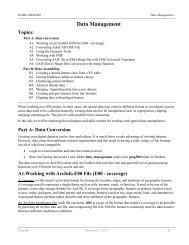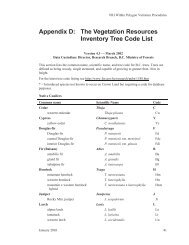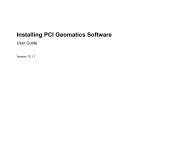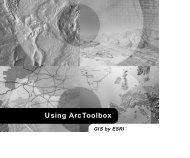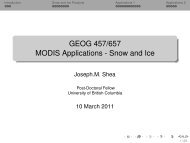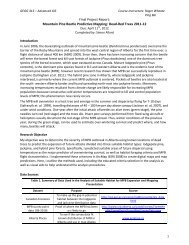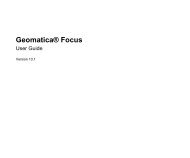Understanding Map Projections
Understanding Map Projections
Understanding Map Projections
You also want an ePaper? Increase the reach of your titles
YUMPU automatically turns print PDFs into web optimized ePapers that Google loves.
GEOGRAPHIC COORDINATE SYSTEM<br />
Geographic coordinates displayed as if the longitude–latitude<br />
values are linear units. An equivalent projection is<br />
Equirectangular with the standard parallel set to the equator.<br />
DESCRIPTION<br />
The geographic coordinate system is not a map<br />
projection. The earth is modeled as a sphere or<br />
spheroid. The sphere is divided into equal parts<br />
usually called degrees; some countries use grads. A<br />
circle is 360 degrees or 400 grads. Each degree is<br />
subdivided into 60 minutes, with each minute<br />
composed of 60 seconds.<br />
The geographic coordinate system consists of<br />
latitude and longitude lines. Each line of longitude<br />
runs north–south and measures the number of<br />
degrees east or west of the prime meridian. Values<br />
range from -180 to +180 degrees. Lines of latitude<br />
run east–west and measure the number of degrees<br />
north or south of the equator. Values range from +90<br />
degrees at the North Pole to -90 degrees at the South<br />
Pole.<br />
The standard origin is where the Greenwich prime<br />
meridian meets the equator. All points north of the<br />
equator or east of the prime meridian are positive.<br />
USES AND APPLICATIONS<br />
<strong>Map</strong> projections use latitude and longitude values to<br />
reference parameters such as the central meridian,<br />
the standard parallels, and the latitude of origin.<br />
Supported map projections• 59




